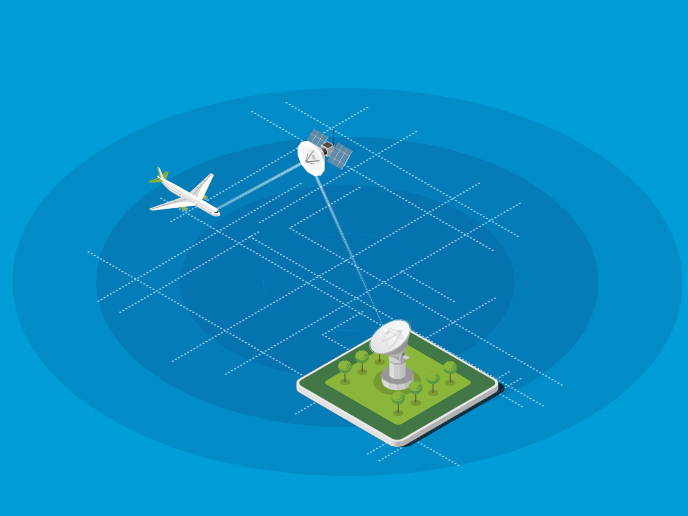II - Seamless airspace heralds greener flights, thanks to satellites
“Our approach will replace procedural routes with optimal ones.”
José Alberto, ECHOES project coordinator
Effective communications, navigation and surveillance (CNS) systems are crucial to the safe and efficient operation of air transport. To date, the underlying infrastructure has mostly been ground-based, limiting potential environmental, cost and efficiency gains. “To ensure safety when there is no CNS coverage, in oceanic airspace for example, controllers must predefine air routes and increase the distance between aircraft, leaving no room for flexibility,” explains José Alberto, programme manager at Startical, and coordinator of the ECHOES project. ECHOES is pioneering the use of space-based technology to provide very high frequency (VHF) aircraft communications (voice and datalink), combined with aircraft locating surveillance (ADS-B). As a SESAR JU demonstrator project, ECHOES will also aim at accelerating the market uptake of space-based CNS. To develop a platform for air navigation service providers (ANSPs), ECHOES will design, build and launch dedicated low Earth orbit satellites. The demonstrator will develop some bespoke parts, while others will be sourced from existing market solutions. After launch, the technical feasibility and parameters of the VHF voice and datalink and satellite-based ADS-B will be tested through use cases in the South Atlantic corridor, including southwest European oceanic airspace. Coordinated by the project host Startical in Spain, researchers will demonstrate how successfully oceanic airspace capacity is increased by reducing the minimum separation between aircraft, and assess non-CO2 environmental benefits, such as reduced fuel consumption, using sensors, satellite imagery and meteorological data.
Faster journeys, fewer emissions
Additionally, ECHOES will look at ‘4D trajectories’, which add time to the three spatial dimensions, to optimise flight trajectories. The tests will involve the participation of ANSPs such as NAV Portugal and ENAIRE, alongside airlines, a communication service provider and regulatory advisors. By allowing pilots and air traffic controllers to take advantage of variables such as the weather, flight efficiency can be increased, benefiting passengers with shorter journey times and more reliable flights, alongside environmental gains of reduced fuel consumption and CO2 emissions. “Our approach will replace procedural routes with optimal ones, without major changes to current aviation infrastructures or additional controller training or certification,” says Alberto. ECHOES will develop an environmental impact assessment and a cost-benefit analysis to quantify the system’s potential.
Keywords
aviation, SESAR JU, sustainability, carbon neutrality, air traffic management, ATM, Green Deal, environmental impact, Horizon Europe, Digital European Sky, emissions, reduction



